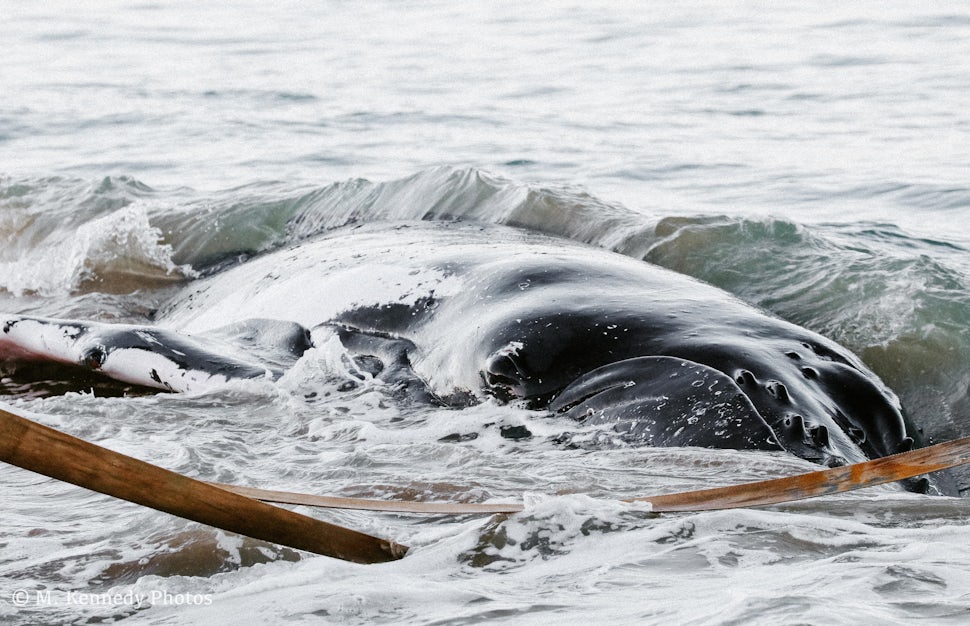A South African Adventure: The Whale Truth
The captain revved the engine up to maximum speed and I watched as smoke billowed angrily from the exhaust tube, bumping into the gentle pinks and blues of the setting sun. Still, the whale lay motionless, seemingly uninterested in the attempts to rescue her. She had already given up.

Whales are stunning creatures that roam throughout all of the world’s oceans. Warm-blooded mammals, they are similar to humans in that they breathe air and care for their young. Some people identify them by their thick layer of fat called blubber that insulates their bodies and keeps them warm in the icy ocean waters. Thanks to a little blue fish named Dory, others know them for their distinctive calls, clicks and whistles; however, the coolest thing about whales has to be how important they are in the circle of life.
When it comes to the ocean’s ecosystem, whales play a major role. They aid in maintaining a stable food chain by keeping the population of certain fish species in check. Whales also play an important role in reducing the amount of excess carbon in the atmosphere by stimulating the growth of phytoplankton. These delicate marine ecosystems are being significantly impacted by the rising amount of plastic in our oceans.
To put this into perspective, a recent study found that the amount of plastic in the ocean will outnumber wildlife 3:2 by 2050. To make matters worse, whales, dolphins and other aquatic mammals are at a high risk of consuming plastic due to their unique feeding techniques. While these animals are intelligent, micro-plastics can be swallowed accidentally, causing a number of health problems and increasing the risk of death. While in South Africa, I witnessed first-hand the devastation plastic has caused to our ocean’s health.
It was a late July afternoon when I received a call that a juvenile humpback whale had beached herself near Diaz Beach in Mossel Bay. Quickly, I packed my emergency kit, photography gear and wetsuit and hopped in my van, arriving at the scene shortly after volunteers from The National Sea Rescue Institute, a non-profit organization of first-responders. After examining the scene, the emergency crew decided that their first approach would be to try and guide the whale back into the ocean. Despite being young, she was estimated to be between 20 and 30-thousand pounds. That, along with her glossy, plush surface made her quite difficult to maneuver.
Keep in mind that the number one priority of an emergency wildlife responder is to keep their human crew safe. A whale of any size can easily crush a human being, so everyone must be on the same page and conscious of the movement of the tide. After some deliberation, the commander decided that the best approach would be to fit a long piece of smooth rope around the whale, attach it to a mid-sized boat and gently guide her back towards the open water.
Five members of the crew moved into the shallow part of the tide, fitting one end of the rope around the whale’s forehead and gently guiding it towards her midsection with each passing wave. After several minutes the rope was secured and attached to the boat. The anticipation was building, and a small crowd of hopeful locals had gathered on the beach, watching and cheering on the emergency crew. The commander gave the ‘ok’ and the boat’s captain started the engine. Suddenly, the motor began to churn and charge, howling at the rising moon, but the whale wouldn’t move. The captain revved the engine up to maximum speed and I watched as smoke billowed angrily from the exhaust tube, bumping into the gentle pinks and blues of the setting sun. Still, the whale lay motionless, seemingly uninterested in the attempts to rescue her. She had already given up. The emergency crew started to consider the sad chance that the young whale had beached herself intentionally due to threat or illness.
Being that Mossel Bay is home to a large shark population, was the whale fleeing a threat? Or, was the whale facing a life-threatening illness or injury? As I later discovered, the answer was in single-use plastics. The young whale had accidentally consumed large amounts of it while filter-feeding in the open water. Undigested, the plastic began to accumulate in her stomach, causing her to feel full and rendering her unable to properly digest food. Over time, she became severely malnourished and, aware of her failing health, had beached herself as she wasn’t strong enough to survive.Unfortunately, this case is more common than you might think. Globally, over 100,000 marine mammals die each year as a result of plastic pollution. Even worse, this statistic is rapidly increasing each year. So, how do we put an end to this? Check out below for a list of things everyone can do to help our friends in the ocean.
Reduce: Be conscious of what you consume each day and cut down on the amount of plastic-based goods you purchase.
Reuse: Instead of purchasing single-use plastic water bottles, use a refillable one. When shopping, bring Eco-friendly, reusable bags from home to transport your goods.
Recycle: Properly sort recyclables, including paper, plastic and glass, into the proper bins.
Refuse: Instead of using plastic straws at restaurants, kindly refuse them. If you find yourself still needing that product, invest in a reusable Eco-friendly option.
Remove: Gather some friends and do your part by picking up, and properly disposing of, trash in your city.
We want to acknowledge and thank the past, present, and future generations of all Native Nations and Indigenous Peoples whose ancestral lands we travel, explore, and play on. Always practice Leave No Trace ethics on your adventures and follow local regulations. Please explore responsibly!
Do you love the outdoors?
Yep, us too. That's why we send you the best local adventures, stories, and expert advice, right to your inbox.











